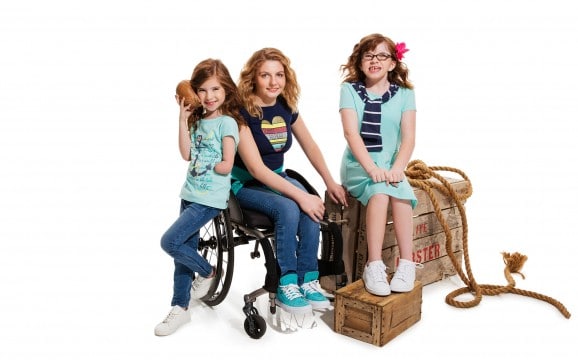In the past, Enabling Devices’ blogs have featured adaptive clothing, shoes and beauty products from retailers including Target, Kohl’s, Zappos, JCPenney, Nike, Tommy Hilfiger, Billy Footwear, and Guide Beauty. Fortunately, with every passing year, more and more retailers are jumping on the adaptive product bandwagon. Here are some of the latest companies to offer or update their adaptive lines.
1. Victoria’s Secret
Next month, the iconic lingerie company will introduce its new adaptive collection at New York Fashion Week’s Runway of Dreams show. The new collection includes bras and panties with magnetic closures. According to Disability Scoop, the products have received the Gamut Seal of Approval™ which means they have met requirements set by a group of disability experts.
2. CVS
In January 2023, CVS Pharmacy introduced its one+all beauty and personal care line. After the drugstore chain conducted a survey of 100 consumers with mobility or dexterity challenges, it saw a need to add to its adaptive line of products. CVS’s new Universal Tools collection includes universally designed rounded tip scissors, nail nipper+catcher, slant tweezer, half jaw cuticle nipper, nail clipper+catcher and pumice stone.
3. Lancôme
High-end beauty brand Lancôme will soon release HAPTA, a new motion-stabilizing device designed to help individuals with hand movement disorders such as arthritis, Huntington’s disease, tremors, etc. to apply lipstick and mascara.
4. JanSport
Just in time for back-to-school season, JanSport has released a new collection of adaptive bags and backpacks specially designed for walker and wheelchair users. According to Good Housekeeping, “These bags have the classic appearance of JanSport bags with adaptive features like anchor straps on the bottom to keep them in place on a mobility device, easy-release buckles and shortened height for easier access.”
5. Slick Chicks
Can’t wait for Victoria’s Secret to release its new adaptive collection? Why not check out the Slick Chicks line instead? Slick Chicks offers bras with zipper and Velcro™ front closures, and underwear with side fasteners. The brand also has an athleisure line including open sleeves, elastic waistbands and clasp buttons. Lingerie retailer Aerie is now offering Slick Chicks products on its website.
6. Seven7 Jeans
Seven7 Jeans have been a fashion staple for years, but now the denim brand offers nine adaptive women’s jean options for wearers with disabilities. As a recent Women’s Day article reported, the jeans “feature soft, stretchy fabric that’s specifically designed not to bunch up when using a wheelchair. Additionally, the jeans feature Velcro™ waist closures (beneath a faux button) to make putting them on less of a hassle.”
7. Kizik
Looking for a pair of athletic shoes that you can put on without kneeling down or using your hands? Check out Kizik, the sneakers so soft and squishy that you can get your feet into them just by slipping them on. Available in many great colors too!






